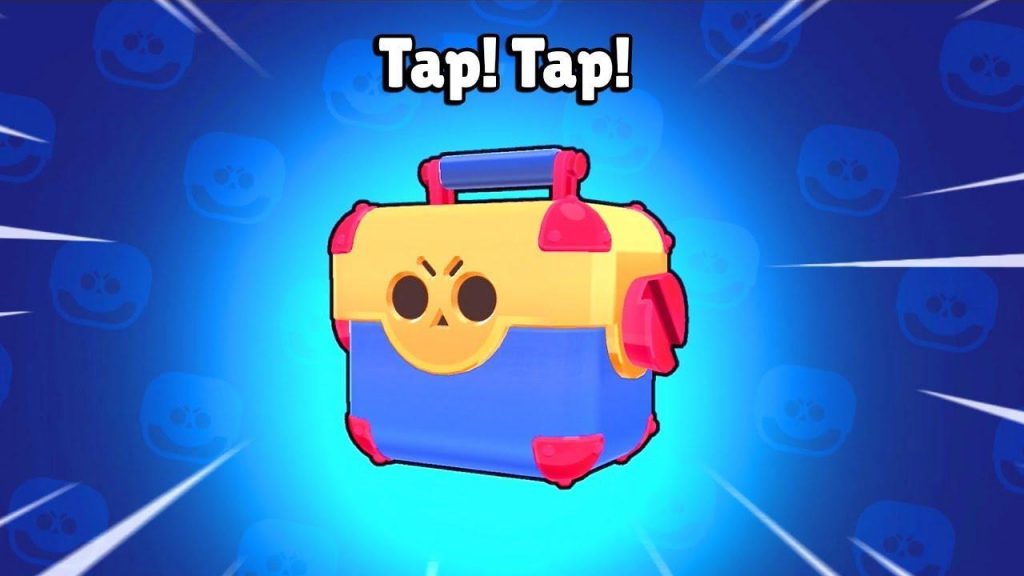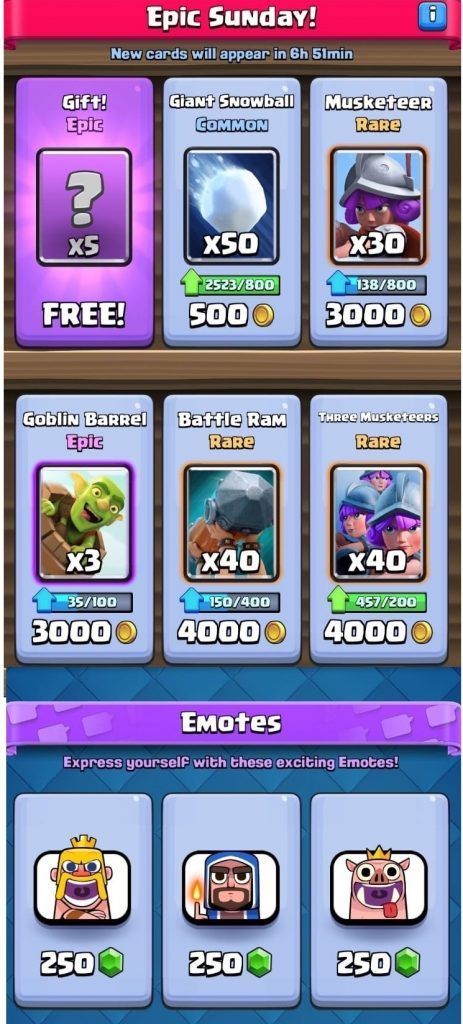Supercell’s Brawl Stars; a step towards an ethical Freemium design in Mobile Gaming?
Introduction
Brawl Stars is Supercell’s latest freemium mobile game. Released globally on the 12th of December 2018. It had a huge impact on the Mobile gaming community, instantly dethroning Clash Royale as the most popular mobile game on Youtube (Andres, 2019). Released in March 2016 by … Supercell, Clash Royale supposedly follows the same freemium model as Brawl Stars. However, the watchful eye will notice a few tweaks. Whereas the oldest game took around 22 years of free gameplay to complete upon release (Tassi), the Finnish company’s newest success only takes around 2 years of dedicated (but still free) gameplay to achieve the same result (Wei, 2020). One can easily notice the shift in politics adopted by the mobile game industry giant, but it is perhaps even clearer when you know that around a year ago, according to a Reddit user, you needed around 24,000$ to max your Clash Royale account from the get-go (“R/ClashRoyale – [Effort Post] How Much Does It Cost to Max a CR Account?”). Although I could not find the exact price regarding Brawl Stars, the cost seemed to have been around 2,500$ a month ago according to Youtube (Unlocking & Fully Maxing EVERY Brawler Costs $?) which represents a surprising tenfold decrease both in time and money. Why did Supercell decide to shift their games’ business model so drastically and how did they do it?
Dark Patterns and Controversies
Dark Patterns, especially in Game Design, have been a long-time concern even in Academic Circles. A dark pattern was defined as “a pattern used intentionally by a game creator to cause negative experiences for players which are against their best interests and likely to happen without their consent” (Zagal et al., 2013). The end-goal for designers that use those is usually to maximize the amount of money and time players will spend on the game. As stated in the introduction, those numbers can reach ridiculous heights which raises several issues. In Clash Royale’s case, these dark patterns were identified as mostly relying on social mechanisms and player frustration (Dulaurans and Marczak, 2018). In my opinion, an interesting way to approach dark patterns would be to link them with Bucher & Helmond’s high-level affordance concept. In this article, such affordances are defined as “the kinds of dynamics and interactions enabled by technical devices” as opposed to low-level affordances which are more “concrete” and “feature-oriented” (Bucher and Helmond). Indeed, game designers use insidious features which collectively create a dark pattern to induce a time/money-spending dynamic in their player base, both on an individual and collective level (Dulaurans and Marczak, 2018). A good example of low-level affordance in freemium games that contributes to such patterns is loot boxes. Both Brawl Stars and Clash Royale use this controversial feature that more and more countries are trying to regulate (Webb, 2020). A loot box (how it exactly works depends on the game) is usually bought with real money and offers randomized virtual items. The main legal trend on this issue is to link them with gambling in order to have a readily regulatory framework to work with. A few cases made it to the judge in different jurisdictions, however most were dismissed due to the fact that the virtual items could not be exchanged against real money or were not deemed to fulfill the gambling definition (Liu, 2019).

Brawl Stars vs Clash Royale
In addition to loot boxes, academics have identified several other design choices in Clash Royale that contribute to the game’s dark pattern that have not been used on Brawl Stars (Dulaurans and Marczak, 2018). For example, one of the key culprits was the “clan” dimension of sociality, putting pressure on the player and influencing progress. In Brawl Stars, sociality is centered around clubs and along with the change of terminology, they have a very limited impact on a player’s progression, as its main use is to find players with the same skill level and time investment for the more competitive aspects of the game that is often overlooked by the casual part of the player base. The playing-by-appointment element of Clash Royale (Zagal et al., 2013; Dulaurans and Marczak, 2018) has also been significantly toned down since logging in Brawl Stars once every 24 hours is technically enough to maximize your progress (Wei, 2020). But the most striking evidence of this business-model and design shift can be found by comparing both in-game shops. A quick glance instantly reveals how the Clash Royale current shop is way more pay-to progress oriented whereas Brawl Stars’ offers a wider range of cosmetic offers that have no impact on the character’s gameplay per se and thus does not capitalize as much on the player’s frustration to get sold. In the same fashion, both games offer season passes that allow the player to get increased progress for a predefined period of time. Interestingly, Clash Royale’s is only buyable using real money whereas Brawl Stars’ can be purchased using the game’s premium currency, allowing players to accumulate gems to buy it without using real money.


Conclusion
In a keynote given in 2000, Postman discussed McLuhan’s aphorism “The medium is the message” by saying “a medium is a technology within which a culture grows” (Mcluhan, 1994; Postman, 2000). Applied to our post’s subject, it would imply that the mobile gaming culture is profoundly shaped by the games we play and how they are designed. As a market leader, mainly because of the two aforementioned games, Supercell has a responsibility towards what mobile gaming culture is today and how it will evolve in the future. Interestingly enough, despite the different choices and the visible enlightenment of Brawl Star’s dark pattern, both games seem statistically really close to each other, both in terms of community (the dedicated subreddits each have around 450.000 members) and in terms of monetary success (Brawl Stars – Revenue Estimates, App Rankings & Installs; Clash Royale – Revenue Estimates, App Rankings & Installs). However, the atmosphere in these two communities and their relationship with Supercell is completely different. Indeed, the Clash Royale community tends to be very critical of Supercell and what they call “cash-grabs” whereas Brawl Stars’ seems more creative and overall positive. Brawl Stars’ design and business-model thus seems way more ethical to me as an active player of both games.
Bibliography
Andres. “Clash Royale Dethroned as the King of Mobile Games on YouTube.” GameInfluencer, 22 Mar. 2019, https://gameinfluencer.com/brawl-stars-most-popular-mobile-game-youtube/.
Brawl Stars – Revenue Estimates, App Rankings & Installs. https://thinkgaming.com/app-sales-data/174460/brawl-stars/. Accessed 26 Sept. 2020.
Bucher, Taina, and Anne Helmond. “The Affordances of Social Media Platforms.” The SAGE Handbook of Social Media, by Jean Burgess et al., SAGE Publications Ltd, 2018, pp. 233–53. DOI.org (Crossref), doi:10.4135/9781473984066.n14.
Clash Royale – Revenue Estimates, App Rankings & Installs. https://thinkgaming.com/app-sales-data/93650/clash-royale/. Accessed 26 Sept. 2020.
Dulaurans, Marlène, and Raphaël Marczak. “Quand le jeu vidéo devient affaire de clan : un Clash Royale entre incitation et inhibition.” Revue française des sciences de l’information et de la communication, no. 13, 13, Société Française de Sciences de l’Information et de la Communication, June 2018. journals.openedition.org, doi:10.4000/rfsic.3610.
Liu, Kevin. “A GLOBAL ANALYSIS INTO LOOT BOXES: IS IT ‘VIRTUALLY’ GAMBLING?” Washington International Law Journal, vol. 28, no. 3, July 2019, pp. 763-. Gale Academic OneFile.
Mcluhan, Marshall. Understanding Media. p. 6. 1994 (1964)
Postman, Neil. The Humanism of Media Ecology. 2000, p.1
“R/ClashRoyale – [Effort Post] How Much Does It Cost to Max a CR Account?” Reddit, https://www.reddit.com/r/ClashRoyale/comments/d0y72p/effort_post_how_much_does_it_cost_to_max_a_cr/. Accessed 26 Sept. 2020.
Tassi, Paul. “The World’s Best ‘Clash Royale’ Player Has Spent $12K On The Game, And For Good Reason.” Forbes, https://www.forbes.com/sites/insertcoin/2016/04/01/the-worlds-best-clash-royale-player-has-spent-12k-on-the-game-and-for-good-reason/. Accessed 27 Sept. 2020.
Unlocking & Fully Maxing EVERY Brawler Costs $??? | Insane 50,000+ Gem Mega Box Opening! 2020. YouTube, https://www.youtube.com/watch?v=6krcwQ8ryNE.
Webb, Kevin. “Regulators from more than a dozen countries are looking to crack down on ‘loot boxes,’ a controversial video gaming practice that could be too much like gambling.” Business Insider France, 18 Sept. 2018, https://www.businessinsider.fr/us/loot-boxes-european-regulation-2018-9?fbclid=IwAR25SwF6lfRDoN2V1exmlsjTkZ-_npEAa8kK6CF3TNKm0OYgZTqWYSmoP6E.
Wei, Lee. Brawl Stars: How to Max Your Account Faster. 26 Feb. 2020, https://www.sportskeeda.com/esports/brawl-stars-progression-guide.
Zagal, José P., et al. Dark Patterns in the Design of Games. 2013, p. 8.